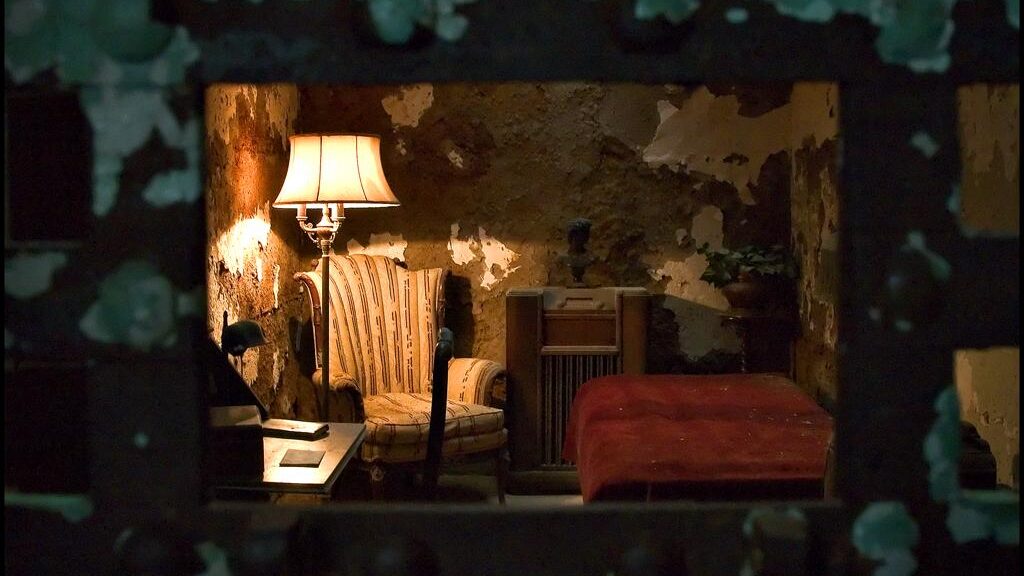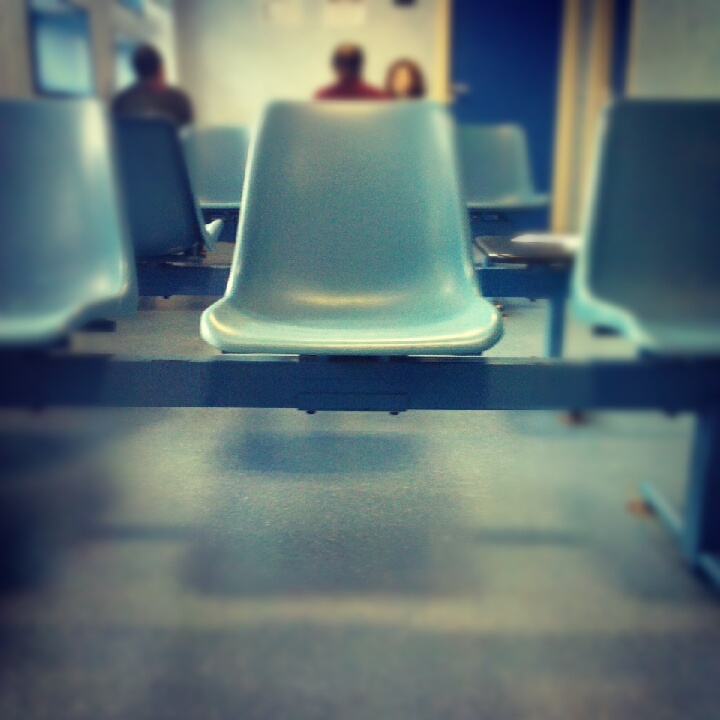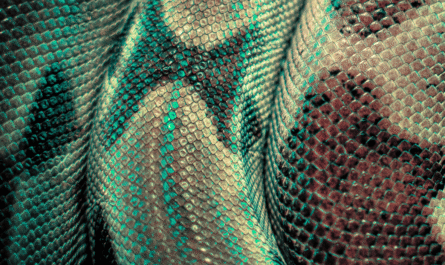This is a very strange story. Until now it has been known only to me. I knew the strange man this story is about. His name was Cleotis, and I worked with him at Parchman Farm, otherwise known as The Mississippi State Penitentiary – the most notorious maximum-security prison in the United States. Parchman was founded in 1901 in bottomland in the Mississippi Delta, and it’s a place where countless horrible things have been done to human beings. Use your imagination to dream up the worst things that can be done to human beings, and I can guarantee you they were done to inmates of Parchman Farm at some point during its history.
Cleotis and I were guards at Parchman. He was thought of as a gentle giant, and he and I became friends the way that people who’ve witnessed horrors together become friends – by helping each get through those experiences and get on with their lives. He was a single man, a quiet kind of guy, and an exceptionally talented amateur oil painter. Sunflower County, Mississippi, where both of us lived, had once had twenty-five or so big plantations in it, including the one that became Parchman Farm, and Cleotis lived out in the country, on twenty acres of land that had once had a slave owner’s residence on it – what slaves used to call the ‘Big House’. The Yankees burned down the Big House on Cleotis’s property in December of 1862, but legend had it that there was a big wine cellar somewhere below where the house once stood, and, as Cleotis explained to me several times when we worked the same shifts at Parchman, he was determined to find it. He used tools to pound long steel rebar rods into the ground, thinking, correctly, that if he found a place where the tip of one of those rebar rods hit a hollow spot underground, making the pounding easier, the hollow spot might be where the old wine cellar was. When he told me he was looking for the wine cellar, I assumed he wanted to find very old wine in it, to cash in on. Little did I know, at that time, that he had other plans for it.
Time passed. I didn’t give any thought to Cleotis’s project. Cleotis got transferred to Unit 29, otherwise known as Death Row, and we didn’t see each other very often after that. Many years passed, and one day Cleotis invited me out to his house. He said he wanted to show me his paintings. A certain look in his eyes when he invited me to his house suggested to me that he might be a little crazy, but when you work long enough at Parchman Farm becoming a little crazy happens to just about everyone, so I didn’t give any thought to his strangeness, and I accepted his invitation. I, too, am a single man, and I’m often quite lonely, and it seemed to me that Cleotis either invited me to his house because he sensed my loneliness or because he himself was lonely and he wanted my company.
I went to his house, out in the middle of nowhere, on a one-lane gravel road, on a hot, humid day in August – the kind of hot, humid day that causes many guards at Parchman to be even more sadistic than usual. As I approached the half dozen wooden steps that went up to Cleotis’s porch, which spanned the whole front of his tidy one-story white clapboard house, I looked up at him, and he stood there with a big, wide smile on his face. It made no sense to me that he was smiling so broadly, because I could see no reason to be so happy about my arrival, but I didn’t give his reaction any thought until after I returned home, a couple of hours later, after which I could not get that look out of my mind. I shudder now when I think of that smile. He took me inside his house, which was air-conditioned, and on the walls were dozens of men’s portraits he had painted. I am not exaggerating when I say that the quality of the paintings took my breath away. The faces were lifelike. It seemed to me that if I had spoken to one of those faces it might have said something back to me. Cleotis laughed at my astonishment. As I stepped from one painting to the next one I told Cleotis that his talent seemed to be equal to that of the greatest portrait-painter of them all – Rembrandt – and he laughed again, even harder this time.
He told me he wanted to show me his studio, which he had built himself, out of the old wine cellar, and he said that I would be the first person he had ever shown it to. It was only then that I realized that that had been his reason, all along, for looking for that wine cellar. He led me out the back door of his house, into the intense heat, and down another half dozen wooden steps, to a small, windowless, flat-roofed outbuilding made of cinder blocks, about fifty paces from his back door. The outside of the building was painted a dull red, and its door was painted a dull yellow. I found it quite strange that to the right of this little building were two large refrigeration compressors, whose fan blades were spinning. When Cleotis opened the yellow door a rush of frigid air hit our faces. Cleotis stepped inside, I stepped in behind him, and he flicked on an overhead light. I closed the door behind me, and as I stood there with Cleotis, on the cement landing, I saw in front of us a cement stairwell that led downward, into the place the slave owner had once had his wine cellar. I will never forget the coldness of that small space at the top of those stairs. It gives me a chill to think about it now, because of what happened in the ensuing hour. Cleotis reached behind me, grabbed two winter jackets off of hooks on the back of the door, and handed me one of them, which he said he’d put there specially for me. We put the jackets on, zipped them up, and I followed Cleotis downward, toward a small, square landing at the bottom of the steps, where I could see dim light entering from an opening on the left.
When we got to the bottom of the stairs and stepped through the door frame to our left Cleotis flicked on another light and I saw that we were in a square, brightly lighted, extremely cold room with bare cement walls, each of which was about eight feet high and about twenty feet wide. In the middle of the room was an artist’s easel, with a canvas on it, but from where I stood I could only see the side of the easel and the canvas. Against the right-hand wall, in front of the easel, a white sheet covered what looked like the top of a ball, at the height of my chest, and the sheet expanded outward as it fell over two rounded lateral projections below the ball and dropped down to the cold cement floor.
Cleotis explained to me that we were standing in the former wine cellar of the plantation’s Big House, and that he had done all the cement work around us – the ceiling, the walls, the floor, and the steps we had come down to get here – and he had installed the refrigeration system by himself. He said that under the white sheet was a corpse. I gasped, and shuddered with fear, when he told me that, but he didn’t notice my reaction because he was stepping away from me, toward his easel. I wanted to scream, and to run, but my feet seemed anchored to the cold floor. The deranged look in Cleotis’s eyes had both terrified me and paralyzed me.
As I stood there mute, Cleotis explained to me that since 1976 Mississippi has bragged about having executed fewer prisoners than six other southern states had executed, despite having had comparable homicide rates during that period, but he said I should not be fooled by that official statistic, because it was a falsehood. Cleotis said the damned fools at Parchman who kept screwing up the executions in the gas chamber, and then kept screwing up the lethal injections, had agreed to let him – Cleotis – offer some of the death row inmates, whose executions were scheduled, and who had no kinfolk whatsoever, and who had long been forgotten by everyone in the outside world, the option of avoiding being taken to the Parchman’s death chamber and instead be taken, in shackles and handcuffs, to Cleotis’s pickup truck, where they would drink a sports drink that was laced with enough heroin to kill any man, gently, five times over, after which Cleotis would give them proper burials. Again and again, men chose that option, and Cleotis told me that what he did was morally right, because if those men in Unit 29 had been able to obtain heroin as easily as the inmates in the other areas of Parchman were able to obtain it, they’d have gone ahead and ended their lives without anyone’s help. He said he’d replaced heroin with fentanyl in recent years.
Cleotis said that by the time he was halfway home on those rides with the condemned men, their heads would slump forward and their breathing would slow down to almost nothing, and by the time he drove out behind his house, to the cinder block outbuilding, they all had, as he put it, ‘released their spirits to The Great Beyond’. At that point, he said to me, he would take off their handcuffs and shackles, carry them down the steps, into the frigid studio he and I were standing in as he explained all this to me, and tie them, in a seated position, to the ladderback chair the corpse was now sitting in, with a white sheet covering it. He would put an old-fashioned neck brace on them, to keep their heads upright and their mouths closed, and after rigor mortis had stiffened them he would be able to remove the neck braces and take all the time he needed – a few months, usually – to paint their portraits, after which he would bury their corpses on nights when there was no moonlight, at different places on his property, in special pine coffins he made for them, with the stiffened corpses on their backs and their lower legs and feet propped up on shelves within each coffin. He said that several times, while digging the men’s graves, he had excavated human skulls, alongside human bones, which, he said, had undoubtedly belonged to slaves. He said that when that happened he collected those skulls and bones, placed them in small pine coffins he made, prayed for those people’s souls, and buried their coffins in what he called the only pretty spot on his property, next to a grove of magnolia trees.
“My problem as a painter, you see,” Cleotis said, “has always been how slowly I paint. When, as a young man, I tried to paint a still lifes with fruit, the fruit would always shrivel up and turn ugly before I’d barely gotten started. I had the same problem with flowers. I knew people would never agree to sit for me, to allow me to paint their portraits, because they would not be willing to spend many weeks, or even many months, sitting in front of me in a chair. So you see? I have painted only forgotten men, and my paintings, which will outlive me, have immortalized them. I talked with each of the men’s spirits during the months it took me to paint them, and I often felt I heard their spirits talking back to me, telling me how appreciative they were, and those spirits’ words inspired me to honor the men and return their humanity to them with the best portraits I could possibly paint. I have written in my will, which I prepared with an attorney, that all the paintings in my house are to be bequeathed to the Smithsonian Institution’s American Art Museum, and I named you as my executor. Please tell me you agree to be my executor.”
I do not know why Cleotis chose to make me his executor. I sense that it was because I was his only friend, and I felt sorry for him. The burden of knowing what I came to know about him has, at times, proven to be unbearable. Rather than report Cleotis to legal authorities – which could have led to my death at the hands of whoever at Parchman had greenlighted Cleotis’s proposal – I long ago created a new identity for myself and left Parchman, and Mississippi, forever.
You are wondering why I am telling this story now. It is because I can tell it now without having to worry about being arrested for keeping secret what I’ve known about Cleotis, and Parchman, for so many years. Cleotis died seven years ago, you see – before I shipped all of his portraits to the Smithsonian Institution, changed my identity, and escaped from Mississippi – and my doctor recently told me that I should get all of my affairs in order because it’s unlikely I’ll live another six months. I suspect that Cleotis’s paintings are in one of the Smithsonian’s warehouses somewhere, as forgotten as the men who were his subjects, and that thought keeps me awake at night. I have authored this affidavit under a pseudonym, and it is my fervent wish that one of you dear readers will pursue this matter in the way that it ought to be pursued, by which I mean that someone should contact the Smithsonian Institution, ask a person there to find the one hundred and eleven portraits of Black men that were shipped to them from Mississippi many years ago, and seek to assign the names of those condemned men, from Parchman, to the portraits Cleotis painted. Only in that way will Cleotis’s desire to immortalize those men be truly fulfilled. As I approach death I will continue to tell myself that someone, among you, will do that.
– The End –
T. G. Metcalf has a background in linguistics, science, literature, and beekeeping. He has written six unpublished novels, and he continues to try to find a literary agent who will help him finally get one of his novels published.




